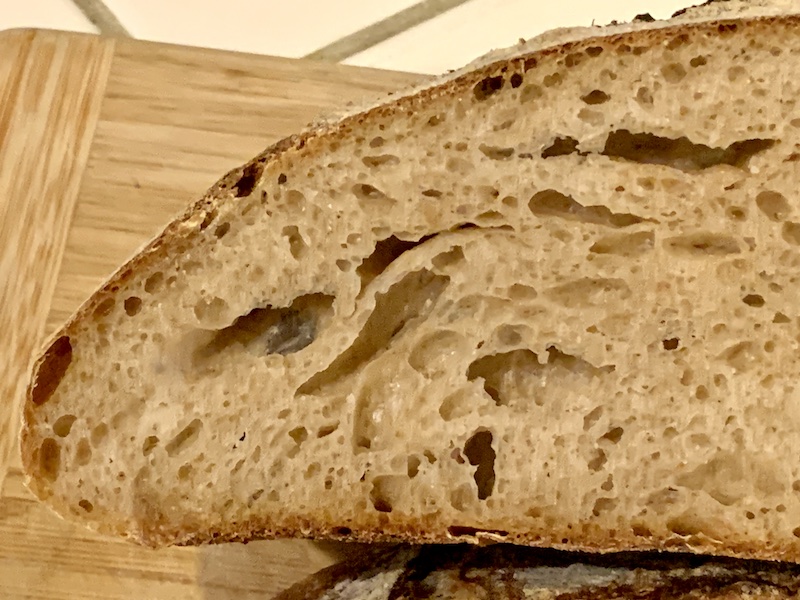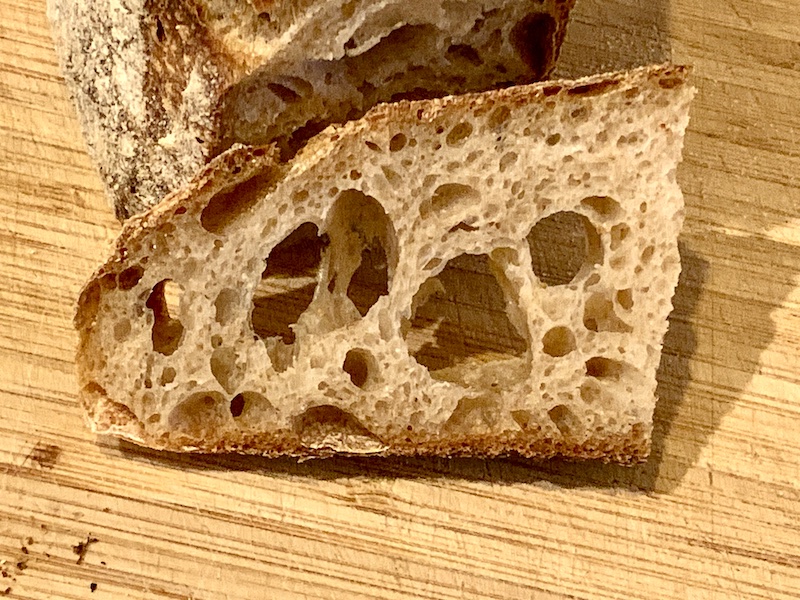
Cold retardation ... or not?
Sourdough Bread baked the same day as mixed versus baked after overnight cold retardation.
David Snyder
February, 2024
Last week I baked my Italian Sourdough bread for the first time without overnight retardation. It was delicious. This made me wonder about some of my other breads that I always have cold retarded on the theory that this developed better, more complex flavor. So, this week, I made my favorite multigrain sourdough and baked one loaf the same day as it was mixed and bulk retarded and baked another loaf from the same batch of dough after an overnight retardation.
Both loaves were proofed for 50 minutes at room temperature. One was then baked after another 45 minutes of proofing. The other was refrigerated for about 18 hours, then warmed at room temperature for an hour before baking. Both loaves were baked in Lodge Combo Cooker cast iron Dutch ovens for 30 minutes covered at 475ºF. The loaf baked the without retardation was baked another 15 minutes uncovered at 460ºF. The retarded loaf which was a bit bigger was baked for 20 minutes more uncovered at 460ºF.

Loaf baked the same day as mixed

The crumb

Loaf cold retarded for 18 hours

The crumb
The unretarded loaf had a slightly sweeter flavor and was a bit less sour. It had a significantly more open crumb. This is hard to explain. It was on the border of over-proofed before baking. Maybe that explains it. The retarded loaf was a bit more sour, and the whole wheat flavor seemed more forward. Both were delicious.
The bottom line for me is that either method could be followed according to my convenience. Both produced delicious breads that differed from each other in minor ways only.
I would love to hear about other bakers' experience with this.
David
P.S. For those who like very open crumbs, here's a slice of the loaf baked without retardation:

David


Comments
I have found when I retard at least 24 hrs I get the crumb you depict in the last picture. Just goes to show The Journal of Irreproducible Results would be right at home here.
Glad to see your occasional postings. I have so many of your previous bakes on repeat. Hoping the winter storms are not impacting you or your loved ones . c
N=1 studies always are suspect. That holey slice is generally representative of the loaf but at the extreme.
I have always understood that longer proofing (even in fridge) led to a more open crumb due to amylase. Of course, there are so many variables contributing to crumb structure. I always think of the 67% hydration baguettes I baked back in 2011 from Pat Roth's (proth5) formula that had such an open crumb. (See https://www.thefreshloaf.com/node/21620/proth5039s-quotstarting-get-bearquot-baguettes)
We have been getting a manageable amount of rain where I live. The Sierra between Yosemite and Tahoe are getting the worst of it.
Happy baking!
David
Hello, David,
Your bread looks good, and the increased sourness caused by a retarded proof is typical. I often proof at room temp for about an hour, then retard overnight. As in the bakeries where I have worked, I bake directly out of the refrigerator--no need to warm the loaf to room temp.
Stephen Knight
Seattle